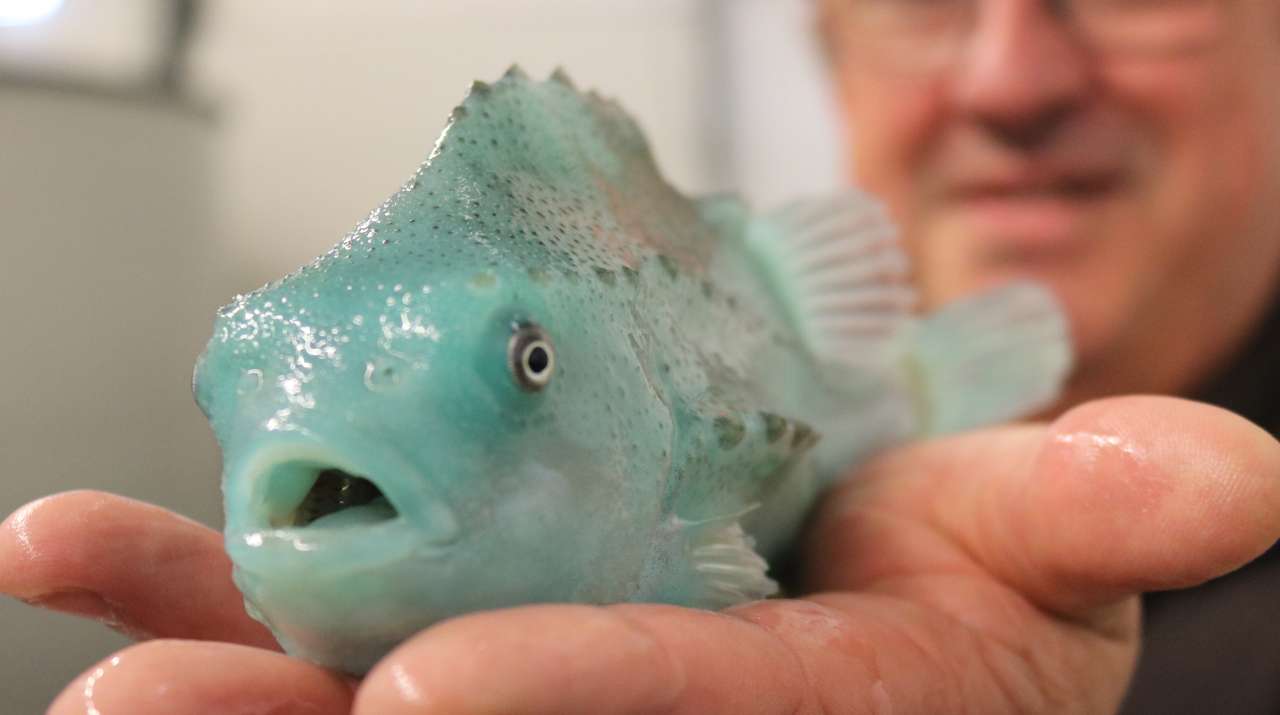Rognkjeks

Rognkjeks ved Gildeskål Forskningsstasjon AS.
Foto: Patrick Reynolds
Rognkjeks er velkjent for sin rogn, men brukes også som rensefisk i akvakulturnæringen. Arten er et viktig biologisk verktøy i kampen mot lakselus på atlanterhavslaks, der den spiser lusen som lever som parasitt på laksen.
Det drives oppdrett av rognkjeks flere steder i Europa. For å øke produktiviteten i avl av denne arten og samtidig sikre god helse og gode lusespiseegenskaper, tar vi i bruk familiebaserte avlsprogrammer i kombinasjon med kvantitativ genetikk.
Målet er at man kan masseprodusere rognkjeks som er bedre egnet til å brukes i oppdrett enn den ville bestanden, spesielt med tanke på sykdomsresistens og lusespising.
KONTAKTPERSON


KONTAKTPERSON


Publikasjoner
Forfattere
Albert Imsland Patrick Reynolds Thor Arne Hangstad Lauri Teemu Kapari Simo Maduna Snorre Hagen Ólöf Dóra Bartels Jónsdóttir Frank Spetland Ken Ståle LindbergSammendrag
To investigate the possible family influence on sea lice grazing of lumpfish on Atlantic salmon, ten families of lumpfish (N = 480) with a mean (± SD) weight of 54.8 ± 9.2 g were distributed among ten sea cages (5 × 5 × 5 m) each stocked with 400 Atlantic salmon with a mean (± SD) weight of 621.4 ± 9.2 g. All the ten cages were stocked with 48 lumpfish (12% stocking density). The stocking of cages was such that each cage consisted of two random families where full- and paternal half-sib families were randomly allocated to the different cages. There were clear differences in sea lice grazing efficacy, growth and cataract prevalence between the ten families assessed in this study. Lumpfish from families 2, 6 and 10 had the lowest mean weights but showed comparable growth rates compared to the other families throughout the study and this may be as a direct result of genetic influence. In addition, fish from these families had a significantly higher incidence of lice grazing of both L. salmonis and C. elongatus compared to the other families. Using mixed linear model to analyse the data revealed significant family and paternal effect on sea lice grazing. There was a trend for a reduction in sea lice grazing with increased size within each family. The results indicated that it was the smallest size classes of lumpfish (40–140 g) which exhibited higher sea lice grazing potential compared to the larger size classes within families. There were no clear differences in the lice grazing potential between male and female lumpfish within and between families. Overall, present findings showed that sea lice grazing of both L. salmonis and C. elongatus can be enhanced using targeted family production and if this behaviour has a genetic basis it may further enhanced through selection and targeted breeding programs.
Forfattere
Simo Maduna Adam Vivian-Smith Ólöf Dóra Bartels Jónsdóttir Albert Imsland Cornelya Klutsch Tommi Nyman Hans Geir Eiken Snorre HagenSammendrag
The lumpfish Cyclopterus lumpus is commercially exploited in numerous areas of its range in the North Atlantic Ocean, and is important in salmonid aquaculture as a biological agent for controlling sea lice. Despite the economic importance, few genetic resources for downstream applications, such as linkage mapping, parentage analysis, marker-assisted selection (MAS), quantitative trait loci (QTL) analysis, and assessing adaptive genetic diversity are currently available for the species. Here, we identify both genome- and transcriptome-derived microsatellites loci from C. lumpus to facilitate such applications. Across 2,346 genomic contigs, we detected a total of 3,067 microsatellite loci, of which 723 were the most suitable ones for primer design. From 116,555 transcriptomic unigenes, we identified a total of 231,556 microsatellite loci, which may indicate a high coverage of the available STRs. Out of these, primer pairs could only be designed for 6,203 loci. Dinucleotide repeats accounted for 89 percent and 52 percent of the genome- and transcriptome-derived microsatellites, respectively. The genetic composition of the dominant repeat motif types showed differences from other investigated fish species. In the genome-derived microsatellites AC/GT (67.8 percent), followed by AG/CT (15.1 percent) and AT/AT (5.6 percent) were the major motifs. Transcriptome-derived microsatellites showed also most dominantly the AC/GT repeat motif (33 percent), followed by A/T (26.6 percent) and AG/CT (11 percent). Functional annotation of microsatellite-containing transcriptomic sequences showed that the majority of the expressed sequence tags encode proteins involved in cellular and metabolic processes, binding activity and catalytic reactions. Importantly, STRs linked to genes involved in immune system process, growth, locomotion and reproduction were discovered in the present study. The extensive genomic marker information reported here will facilitate molecular ecology studies, conservation initiatives and will benefit many aspects of the breeding programmes of C. lumpus.
Forfattere
Ólöf Dóra Bartels Jónsdóttir Julia Schregel Snorre Hagen Camilla Tobiassen Siv Aarnes Albert ImslandSammendrag
The potential for genetic contamination of stocks arising from translocation and subsequent release or escape of translocated and/or genetically mixed stocks may be a significant risk to wild populations. In this context, we undertook a population genetic survey of stocks of lumpfish (Cyclopterus lumpus) along the Norwegian coast to establish the existing genetic population structure, which will aid the development of policy of the species’ use as cleaner fish in salmonid aquaculture. This was done by using 14 microsatellite loci and 287 specimens collected at five fishing grounds, covering most of the Norwegian coastline from south to north, with additional 18 samples of first-generation reared fish from a fish farm outside Tromsø (North Norway). Overall, there was no indication of significant spatial genetic structuring or of positive correlation between geographic and genetic distance among the wild lumpfish samples. These results suggest that, should translocated individuals escape from aquaculture in Norway, this will probably have little to no impact on the genetic composition of the local fish population.
